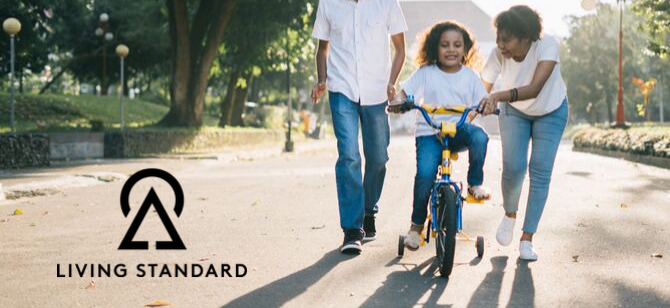To mobilize those outside our community, we need to shift their sense of urgency. But first, we need to shift our own.

Earlier this year, the U.S. Green Building Council’s Living Standard campaign released the first volume of Standard Issue, an in-depth qualitative and quantitative report that demonstrates the urgent need to recalibrate the way we talk about climate change. Today, we launched the second volume of this series, which delves even deeper into how Americans view sustainability and green buildings.
Access Standard Issue, Volume II
As the first volume showed us, climate change is not widely understood. Even more concerning, there’s real confusion around buildings and their profound impact on extreme weather, natural disasters, and the health and wellbeing of people.
And as members of the green building community, we’ve got to start engaging wider audiences to convince the public of the reality of climate-related threats. We’ve got to illustrate the importance of small, everyday actions. And we’ve got to connect the dots between people and the planet they call home.
The good news is that most people do believe environmental problems are important. They just don’t believe these issues are important enough to make action a priority. To mobilize those outside our community, we need to shift their sense of urgency.
But first, we need to shift our own.
Changing public perception will take nothing less than a radical re-framing of our communication methods, particularly our heavy reliance on data and numbers to prove our cause. To be clear, scientific language and startling statistics have their place. But if we intend to reverse the dangers of climate change, we’ve got to bring more humanity into our conversations.
Here’s the catch: This revolution won’t spark overnight. As you’ll see in this report, the way to reach people is not through drastic calls to action or dire warnings to fundamentally alter their way of life. It’s through encouragement of small, gradual changes. It’s through meeting them where they are and finding the story inside of every statistic. It’s through baby steps.
What do I mean by baby steps?
I mean cheering on every little action—whether it’s recycling, conserving water and electricity, or choosing to work in a green building.
I mean stepping outside of our comfort zones, looking beyond our own experiences, and extending a hand to communities that are not our own.
I mean initiating conversations, without agenda, about how our homes can affect our children’s asthma, how the materials used to build a school can make our students sick, and how “going green” can reduce our utility bills, leading to a healthier and wealthier life for all of us.
I mean talking about these steps and your experience in taking them!
Standard Issue Volume II is intended to help you get started. Not only do we highlight new research of the general public, we’ve also included an Action Toolkit which provides new tactics for talking about these issues.
Those who believe the environment is important are more likely to persuade other members of their communities, participate in a call to action, and take political stands. But we must first get them to see before we can expect them to believe. That requires relating to people in new ways.
One of our most powerful tools in creating connection is to share our own stories with others. As we embark on this mission to make our communities healthier and more livable, I invite you to add your own experiences with the natural world at livingstandard.org.
These might seem like tiny requests when faced with the existential crisis of our time. But I whole-heartedly believe this is the path to progress. Start with these small acts, not the least of which is speaking up, even if you don’t yet understand where your experience falls on the spectrum of action we discuss in the coming pages. I have faith that your individual efforts, and our collective efforts, will lead to giant leaps forward, where intention becomes action and action becomes lasting change.